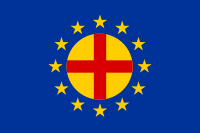
The flag of Europe or European flag consists of twelve golden stars forming a circle on a blue field. It was designed and adopted in 1955 by the Council of Europe (CoE) as a symbol for the whole of Europe.

The European Union is a geo-political entity covering a large portion of the European continent. It is founded upon numerous treaties and has undergone expansions and secessions that have taken it from six member states to 27, a majority of the states in Europe.
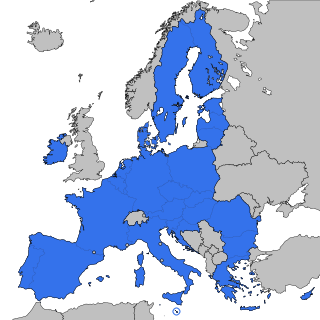
There is ongoing discussion about the extent to which the European Union (EU) has already turned from a confederation into a federation over the course of decades, and more importantly, to what degree it should continue to evolve into a federalist direction. As of January 2024, the EU has no formal plans to become a federation.

The Coudenhove-Kalergi family is an Austro-Bohemian noble family of mixed Flemish and Cretan Greek descent, which was formed by the marriage of Count Franz Karl von Coudenhove (1825–1893) with Marie Kalergi (1840–1877) in 1857.

Pan-European identity is the sense of personal identification with Europe, in a cultural or political sense. The concept is discussed in the context of European integration, historically in connection with hypothetical proposals, but since the formation of the European Union (EU) in the 1990s increasingly with regard to the project of ever-increasing federalisation of the EU. The model of a "pan-European" union is the Carolingian Empire, which first defined "Europe" as a cultural entity as the areas ruled by the Roman Catholic Church, later known as "Medieval Western Christendom". The original proposal for a Paneuropean Union was made in 1922 by Count Richard von Coudenhove-Kalergi, who defined the term "pan-European" as referring to this historical sense of the western and central parts of continental Europe encompassing the cultures that evolved from medieval Western Christendom instead of the modern geographic definition of the continent of Europe. Coudenhove-Kalergi saw the pan-European state as a future "fifth great power", in explicit opposition to the Soviet Union, "Asia", Great Britain and the United States.
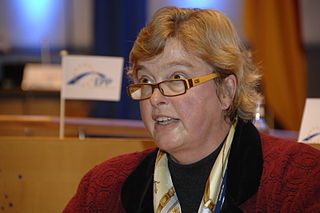
Countess Walburga Douglas is a German-born Swedish lawyer and politician, who served as a member of the Riksdag of Sweden for the Moderate Party from 2006 to 2014. She is the vice-president of the Paneuropean Union and a board member of the Institute for Information on the Crimes of Communism.

This article aims to cover ideas of European unity before 1948.

The founding fathers of the European Union are men who are considered to be major contributors to European unity and the development of what is now the European Union. The number and list of the founding fathers of the EU varies depending on the source. In a publication from 2013 the European Union listed 11 men. All but one were from the Inner Six of the European Union.

The European Federation, also referred to as the United States of Europe (USE), European State, or Federal Europe, is a hypothetical scenario of European integration leading to the formation of a sovereign superstate, organised as a federation of the member countries of the European Union (EU), as contemplated by political scientists, politicians, geographers, historians, futurologists and fiction writers. At present, while the EU is not a federation, various academic observers regard it as having some of the characteristics of a federal system.
The European Parliamentary Union (EPU) was a private organization set up by Richard von Coudenhove-Kalergi, who was also its Secretary General. It held its preliminary conference on 4–5 July 1947 at Gstaad, Switzerland, and followed it with its first full conference from 8 to 12 September.

Mitsuko Thekla Maria, Countess of Coudenhove-Kalergi, formerly known as Mitsuko Aoyama (青山光子), was one of the first Japanese people to immigrate to Europe, after becoming the wife of an Austro-Hungarian diplomat, Heinrich von Coudenhove-Kalergi, in Tokyo. She was the mother of Richard von Coudenhove-Kalergi and the Catholic author Ida Friederike Görres.
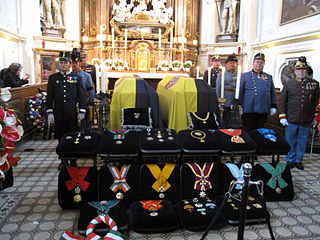
On 4 July 2011, Otto von Habsburg, also known as Otto of Austria, former head of the House of Habsburg and Sovereign of the Order of the Golden Fleece (1922–2007) and former Crown Prince (1916–1918) and, by pretense, Emperor-King, of Austria-Hungary, died at 98 years of age.
The Paneuropean Working Group in the European Parliament was established in 1985 by Otto von Habsburg. It aims at bringing Members of the European Parliament together, who follow the vision and principles of Richard von Coudenhove-Kalergi. Already after the end of the First World War, he formulated his thoughts about a common Europe in freedom, rule of law and peace.

Richard Nikolaus Eijiro, Count of Coudenhove-Kalergi, was a politician, philosopher, and count of Coudenhove-Kalergi. A pioneer of European integration, he served as the founding president of the Paneuropean Union for 49 years. His parents were Heinrich von Coudenhove-Kalergi, an Austro-Hungarian diplomat, and Mitsuko Aoyama, the daughter of an oil merchant, antiques-dealer and major landowner in Tokyo. His childhood name in Japan was Eijiro Aoyama. Being a native Austrian-Hungarian citizen, he became a Czechoslovak citizen in 1919 and then took French citizenship from 1939 until his death.
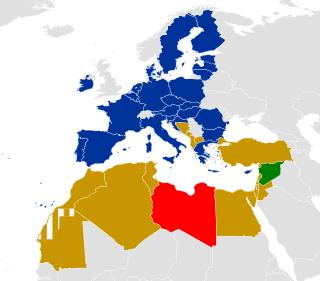
Eurafrica refers to the originally German idea of strategic partnership between Africa and Europe. In the decades before World War II, German supporters of European integration advocated a merger of African colonies as a first step towards a federal Europe.
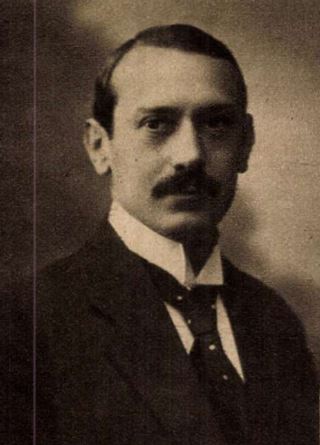
Elemér Hantos was a Hungarian economist and one of the principal promoters of Central European and Paneuropean integration during the interwar period.

The Kalergi Plan, sometimes called the Coudenhove-Kalergi Conspiracy, is a debunked far-right, antisemitic, white genocide conspiracy theory. The theory claims that Austrian-Japanese politician Richard von Coudenhove-Kalergi, creator of the Paneuropean Union, concocted a plot to mix white Europeans with other races via immigration. The conspiracy theory is most often associated with European groups and parties, but it has also spread to North American politics.

The Dialog im Kamptal is a political platform and discussion meeting founded in 2019 in Gars am Kamp, Austria. It is organized as a private, non-partisan initiative and platform based on a purely voluntary basis in the tradition of a "citizens' salon". The dialogues center on European and domestic politics and history.
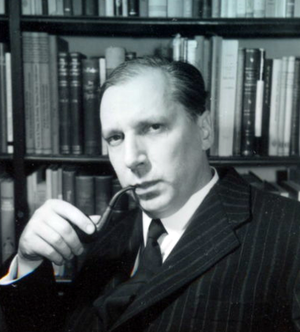
Walter Robert Corti was a Swiss philosopher and writer. He contributed to the newspaper Neue Zürcher Zeitung and the cultural magazine Du. In 1946 he helped found the Pestalozzi Children's Village which served homeless children and orphans from the war-torn countries.

PanEuropa Armenia (PEA), also known as the PanEuropa Armenia Integration Center is an Armenian non-governmental organization which seeks to advance Armenia's European integration, support Armenia's bid to join the European Union, and advocate for closer relations between Armenia and the West. It is headquartered in Yerevan.
